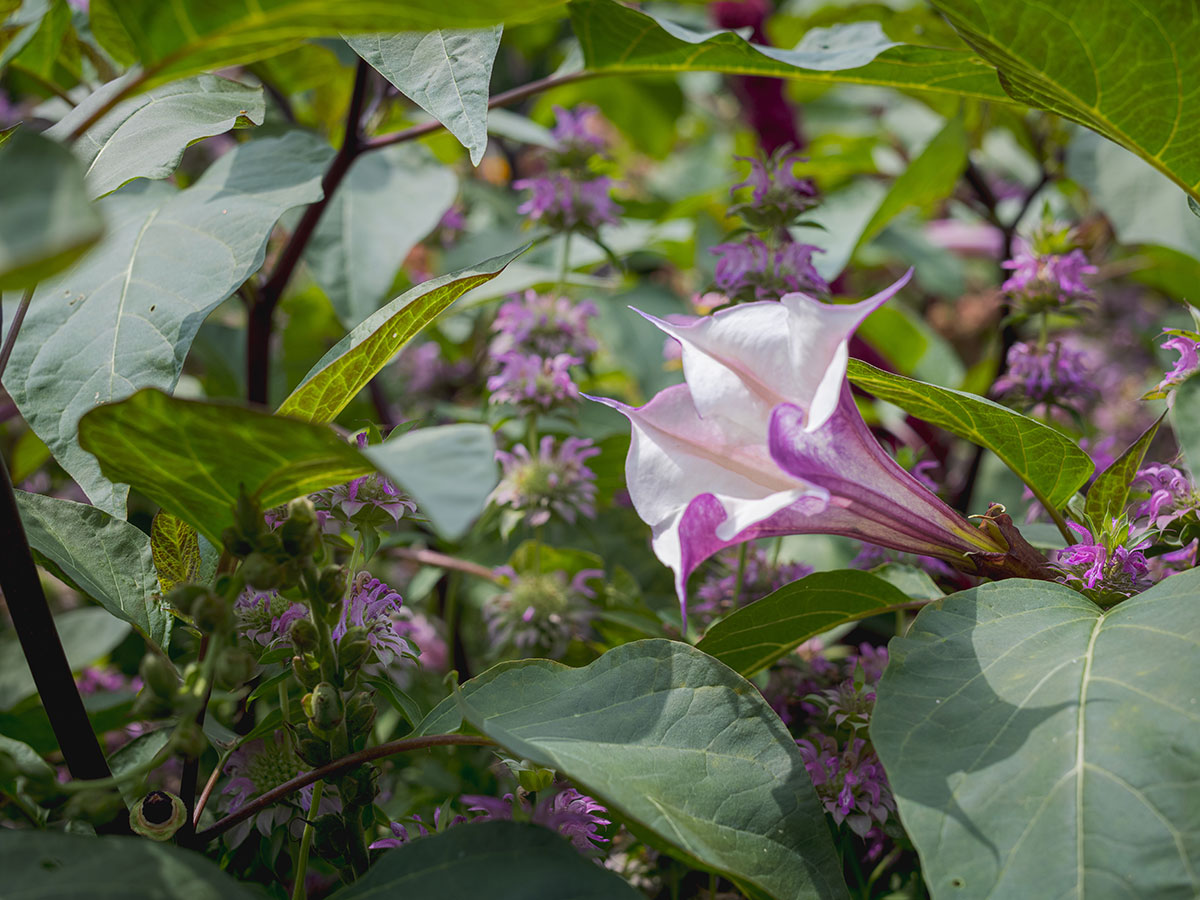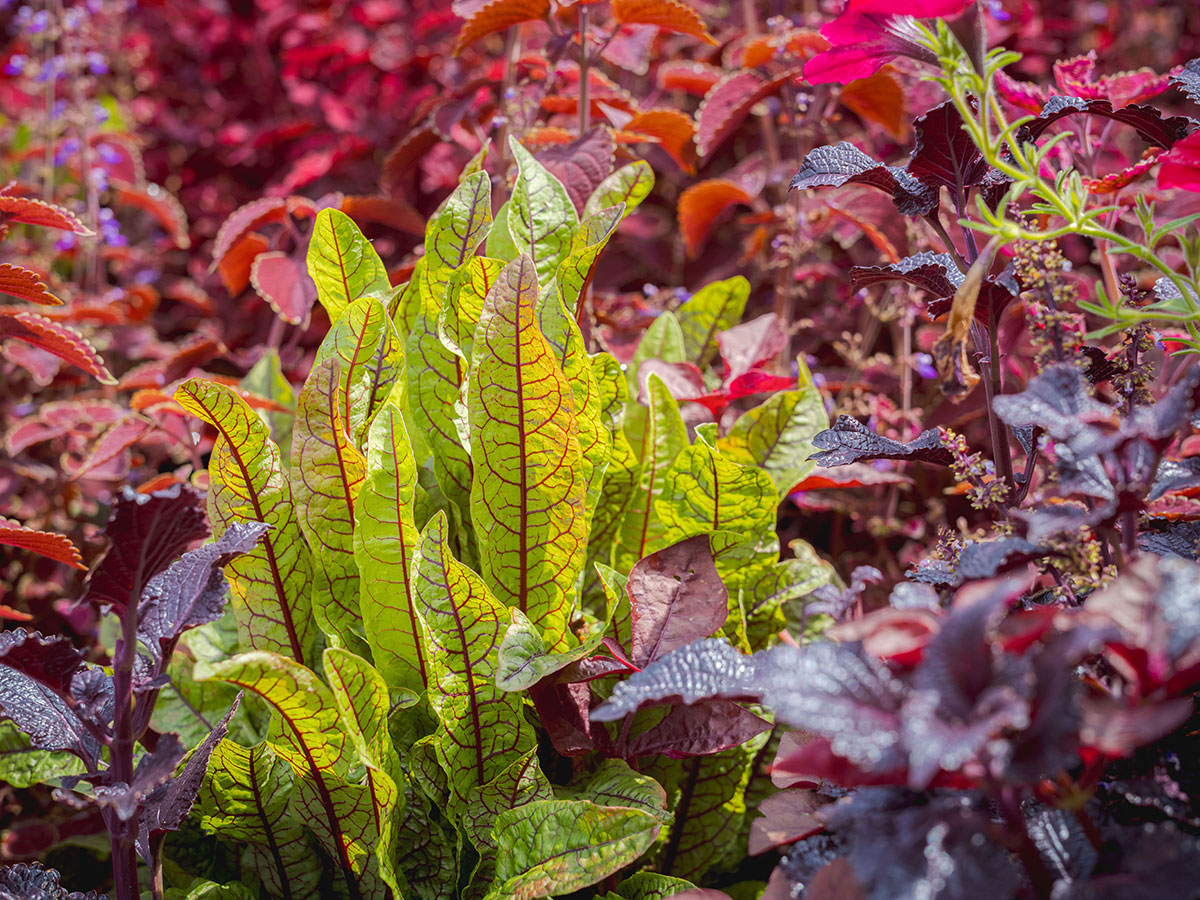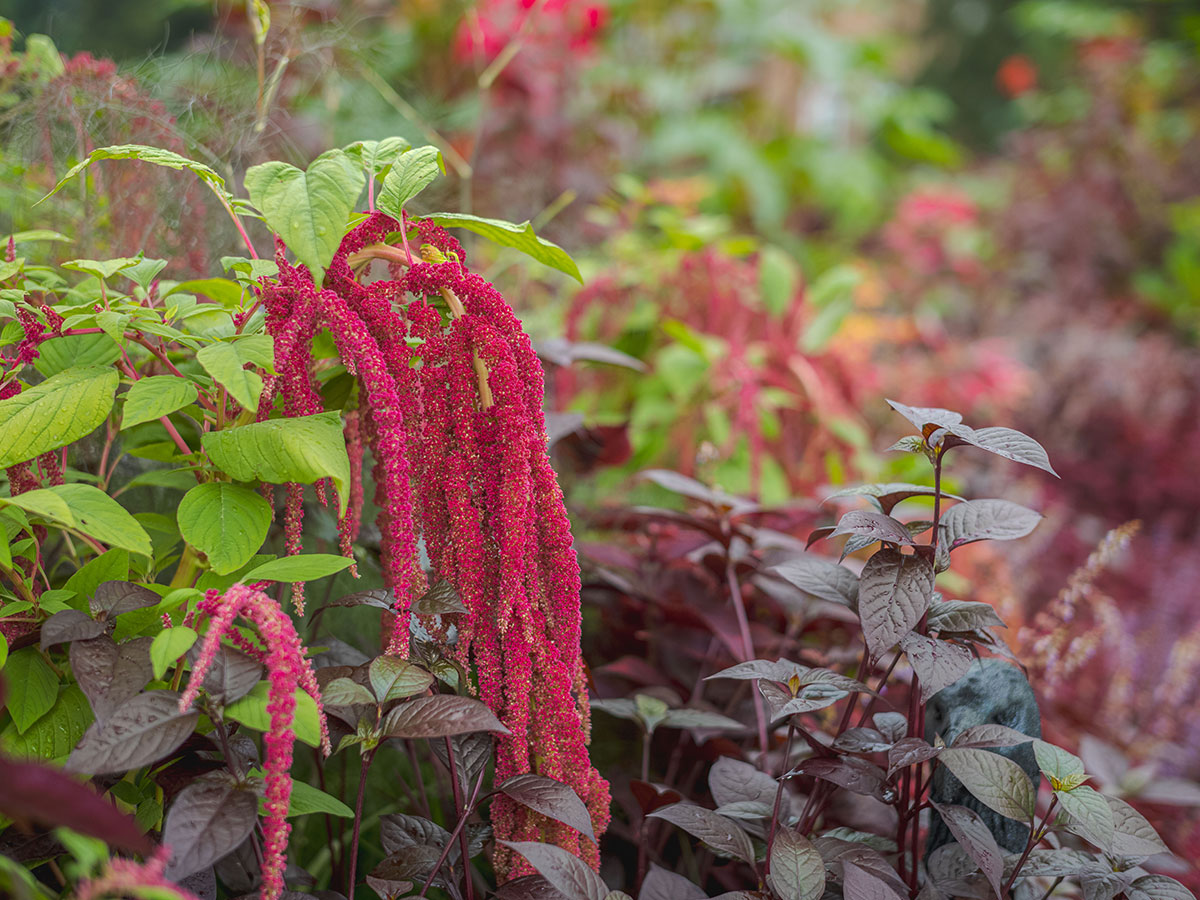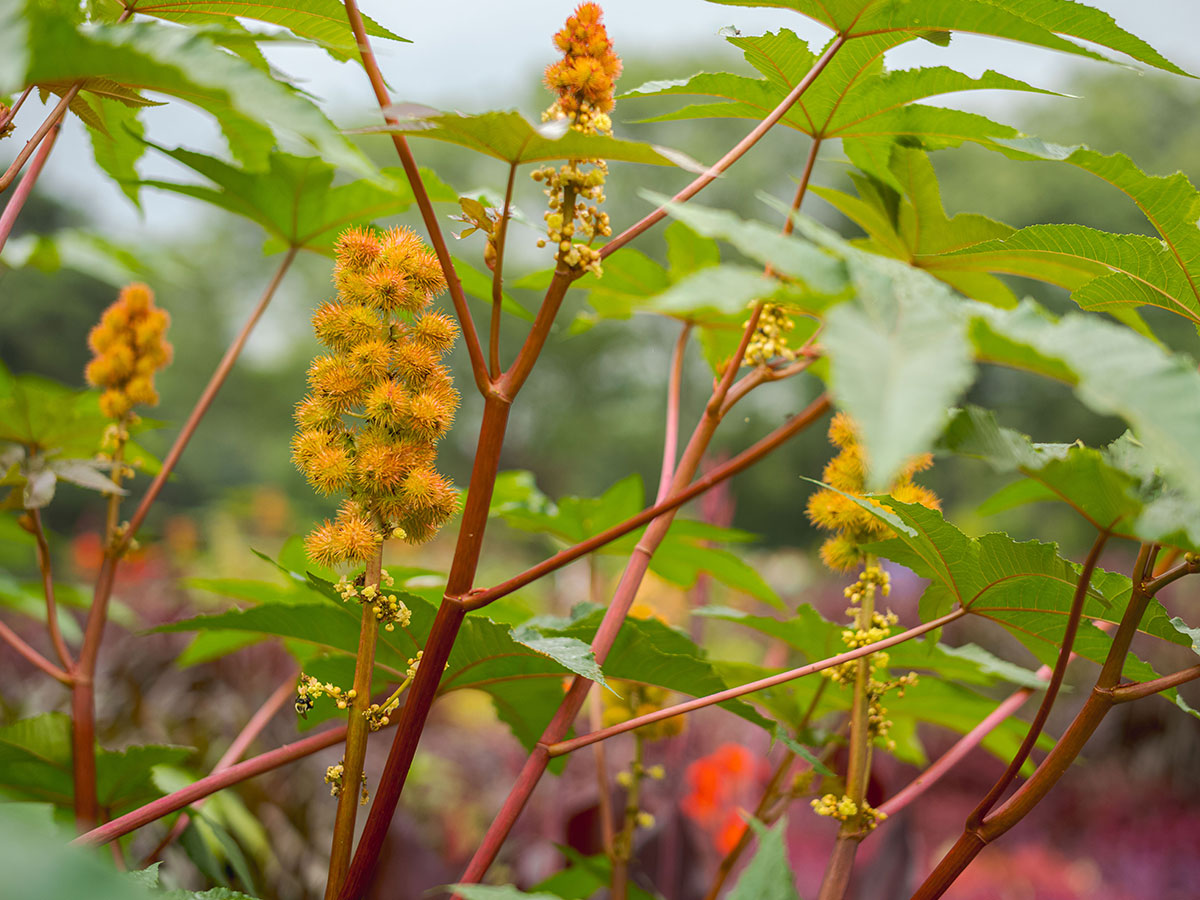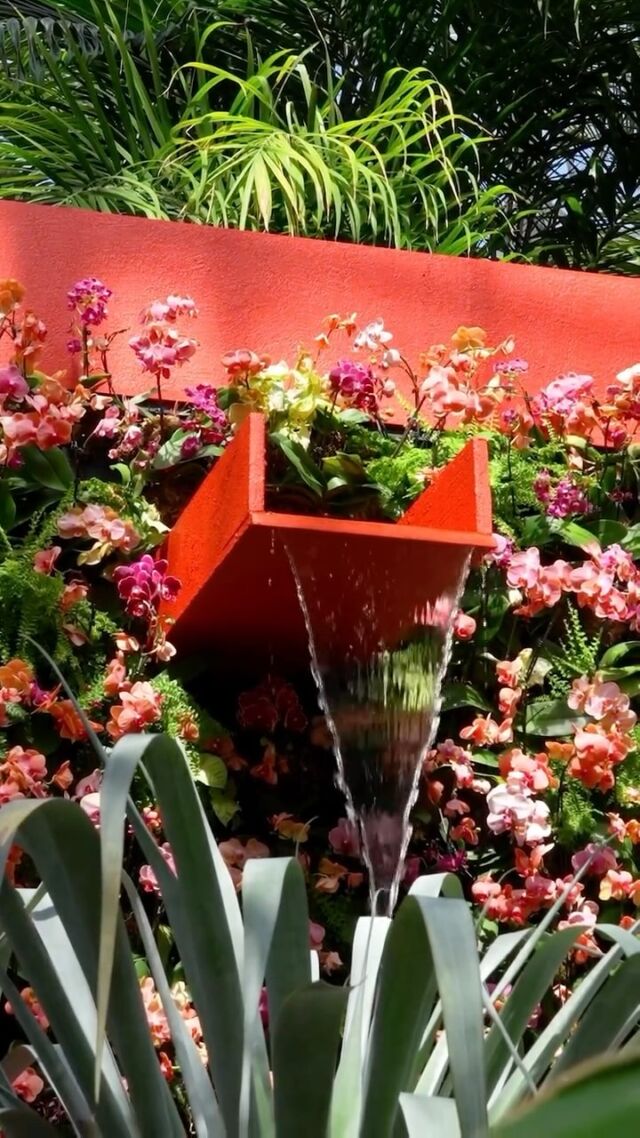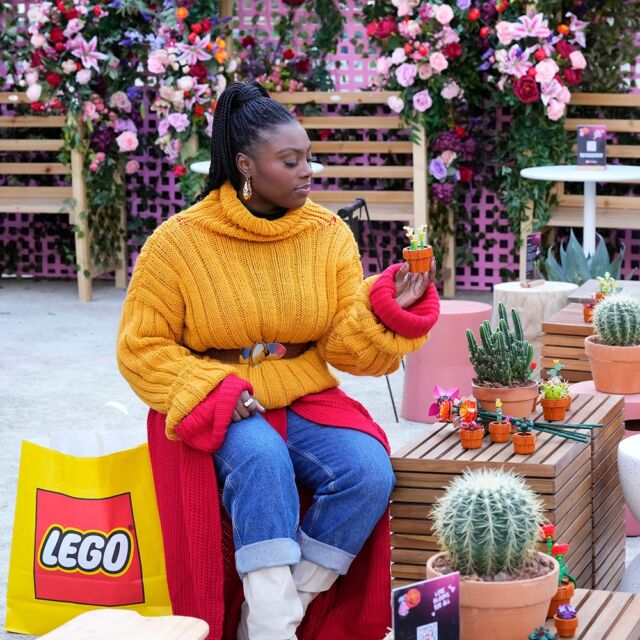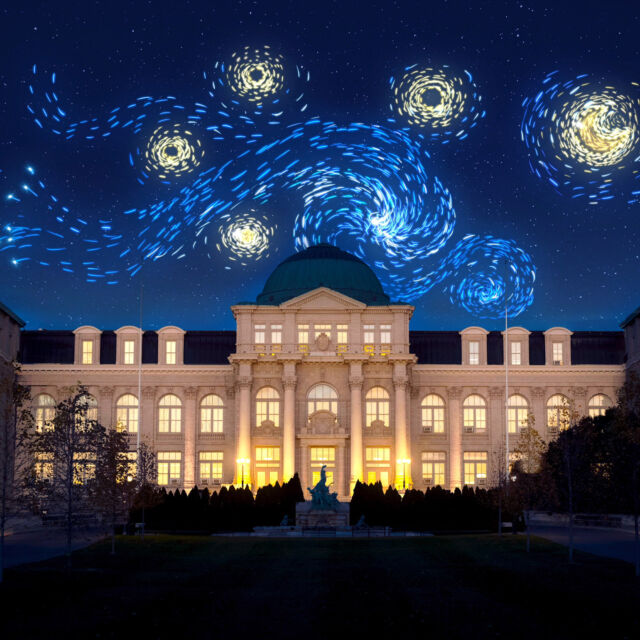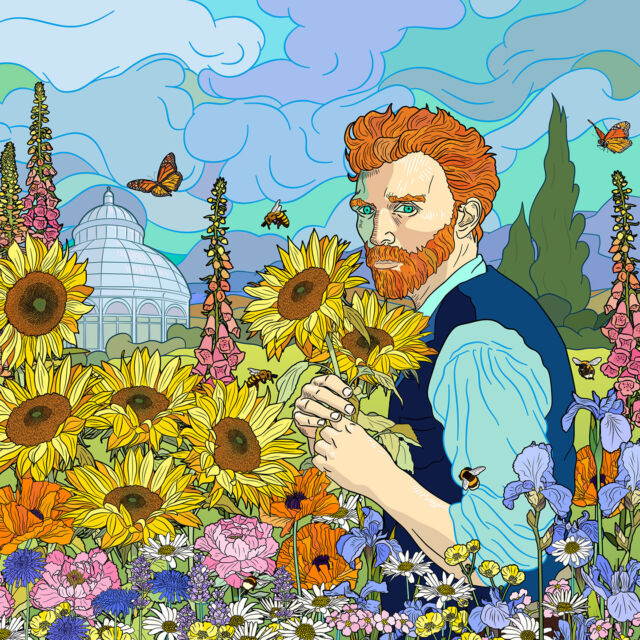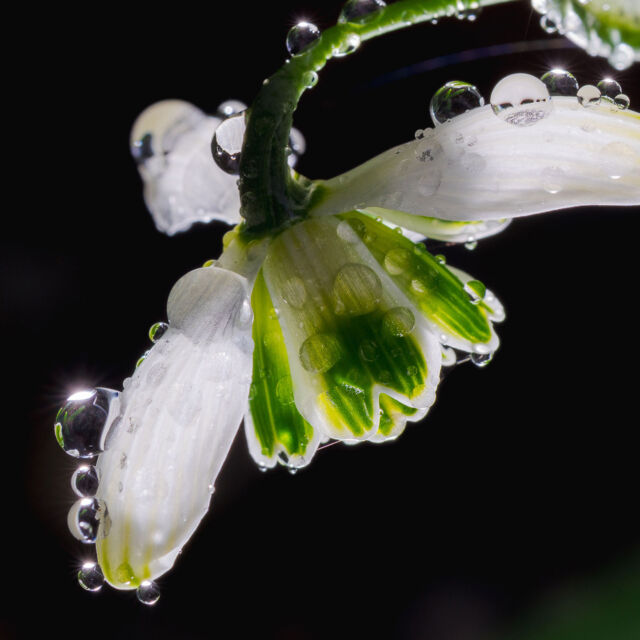Life, Death, and Renewal: Our Summer Exhibition in Bloom
The Conservatory Lawn is in bloom. As part of her exhibition …things come to thrive…in the shedding…in the molting…, Ebony G. Patterson created a space that, at first glance, is a garden as we typically know it: pollinators buzz around pastel purple beebalm, and rosy-hued snapdragons stand tall amidst pale green and lemon-yellow foliage. It’s verdant and lush, just as you’d expect from a summer garden. However, once you begin your journey through, you’ll find that these pockets of jewel-toned flora are interrupted by plants of striking hues: vibrant red, inky purple, and even neon pink. Throughout these ruptures are sculpted, glittering vultures. They seem to tear into these red “wounds” in the landscape, a reminder of the Earth’s natural regenerative process—the cycle of life, decay, and renewal.

Our Exhibitions and Horticulture teams breathed life into this display, working alongside each other and the artist to choose plants that are not only beautiful, but have their own stories that relate to our exhibition and, importantly, are able to grow in our climate. Positioned in full sun out in front of the Conservatory, their bright location makes the multi-layered and multi-dimensional elements of the plantings even more evident. They are full of fascinating species that together form an impasto appearance, with plants of varying levels of toxicity, cultivars with particularly eerie names, and those with ancient stories passed from seed to seed.

Within the wound-like disruptions are flowers and leaves of hues ranging from bright scarlet to deep violet. Appropriately, there are a few plants that are anatomical, including the green-leafed and red-veined rumex (Rumex ‘Rasberry Dressing’), ruby-red and heart-shaped caladium (Caladium ‘Burning Heart’), and the rippled, brain-like celosia (Celosia ‘Dracula’). There are even amaranth (Amaranthus ‘Love Lies Bleeding’) plants with flowers growing in long, finger-like tendrils. Growing around and throughout the greener garden are poisonous plants, like datura (Datura meteloides ‘Evening Fragrance’), a hauntingly beautiful and milky “moonflower;” the castor beans (Ricinus communis), with foreboding spiked seed pods; and the tall, elegant foxglove (Digitalis purpurea).
A few of these plants are paradoxical—though noxious, some also hold medicinal value. Even with their lethal qualities, foxglove and ricinus are sourced for medications and treatments across the world. It is this tension between the possibility of death or life, the ability to harm or heal, that unveils the garden’s meaning.
Many species are featured in tradition and ritual, such as verbena (Verbena bonariensis), which has been used for centuries in folk medicine to make healing salves or edible treatments. It also figures in supernatural and spiritual lore, seen as a sacred or holy herb by ancient civilizations like the Greeks and Romans, its importance in herbalism continuing into the Middle Ages.
Some of these plants are tied to dark histories, as well—including slave labor, ecologically degrading commercial farming, and erasure of indigenous cultures. A few examples within this space include sugar cane (Saccharum officinarum violaceum ‘Pele’s Smoke’), flowering tobacco (Nicotiana langsdorfii), and Ricinus, used to create castor oil. Amaranth has a similarly brutal history—as an important food for indigenous communities in Central America, it was banned when the Spanish colonized the region, only to later become a popular garden plant in Victorian England.
Surrounding the taller amaranth, crimson petunias (Petunia ‘Tidal Wave® Red Velour’) are dotted throughout. Two-toned zinnias (Zinnia ‘Queen Lime’) also peek their heads out from the undergrowth. Both of these flowers were introduced to Europe by colonial botanists; petunias are native to South America, and zinnias to Central America. Seemingly sweet and simple looking, these species that once grew in Aztec gardens are now common in American and English flower beds.
The Horticulture team will not deadhead many of the flowers within this meadow-like garden, as they usually do, leaving nature to run its course and seeds to spread and create even more dimension, repetition, and intricacy within the space. As another representation of the cycle of death, life, and renewal, this was an intentional choice made by Ebony G. Patterson and the NYBG team. As the summer continues and fall creeps up on us, time will surely unearth more plants with their own stories, adding to the layers of a living collection with ties to the past, present, and future of our environment.
- Angel wings; Caladium 'Bombshell'
- Horn-of-plenty, devil's trumpet; Datura metel 'Double Purple'
- Curly dock, sour dock; Rumex crispus 'Raspberry Dressing'
- Foxtail; Amaranthus caudatus 'Love-lies-bleeding'
- Castor-oil-plant, castor bean; Ricinus communis
- Cockscomb; Celosia 'Dracula'
SUBSCRIBE
Enter your email address to subscribe to this blog and receive updates on new posts.

